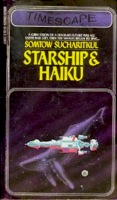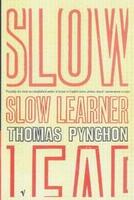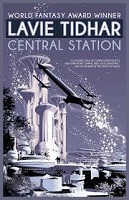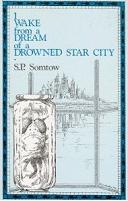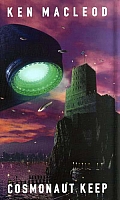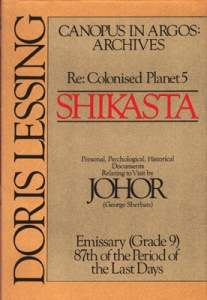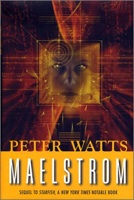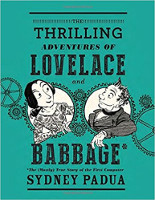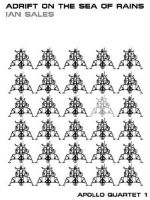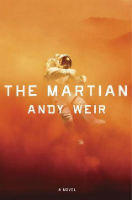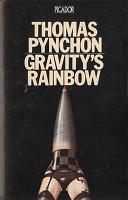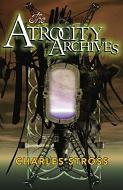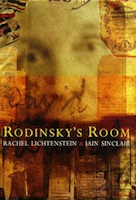 Some day in the late 1960s David Rodinsky, an orthodox Jewish scholar of Eastern European descent, vanished from his room in the attic above a disused synagogue in Princelet St, Spitalfields, the former Jewish quarter in East London. What became of him no one knew, and no had cared about. The room, where he lived as a near-hermit, was forgotten, and was left as if frozen in time, until it was (re)discovered in 1980, in the state he left it behind - complete with porridge on the stove and the imprint of his head still on the pillow.
Some day in the late 1960s David Rodinsky, an orthodox Jewish scholar of Eastern European descent, vanished from his room in the attic above a disused synagogue in Princelet St, Spitalfields, the former Jewish quarter in East London. What became of him no one knew, and no had cared about. The room, where he lived as a near-hermit, was forgotten, and was left as if frozen in time, until it was (re)discovered in 1980, in the state he left it behind - complete with porridge on the stove and the imprint of his head still on the pillow.
The room became a mystery, a time capsule, a touchstone for speculation, and something of a cause celebre amongst those who listen and dig for such things, for the hidden corners, and the remains of history below the every-day surface.
Rachel Lichtenstein, a young Jewish Artist, was staggered and stopped in her path when she learned and encountered the building, the room, and the mystery of its former occupant. She started researching David Rodinsky’s origins, life, and disappearance; which turned into a trip into her own history.
Her background (Polish-Jewish) and drive to art suffuse her part of the story; as her approach to finding Rodinsky, her own connection to 19 Princelet St lead to her stint as Artist in Residence, courtesy of the Spitalfields Heritage Centre. But her focus to finding Rodinsky stopped, at least for a while, her own artistic work whilst she explores Rodinsky's legacy.
She was put in contact with the author Iain Sinclair, a savant of London’s hidden East End if there ever was one, and together they document the area, its history, the synagogue, David Rodinsky - but especially Rachel’s search for herself in Rodinsky’s mirror.
“One day a man, who lived alone in a dead building, in a forgotten part of the town, walked out, disappeared. But it was not a true disappearance, because nobody noticed it. It was a trick without an audience. A retrospective vanishing.” (IS)
When I started the book, I quite soon got the feeling (and Sinclair confirmed that he saw this very much the same later on) that Lichtenstein was looking for herself, and was losing herself in Rodinsky’s absence.
The book is in the shape of a series of interlacing essays by the two authors, with rather different approaches:
RL documents her travels, her travails, her search for herself, and for meaning; and, of course for Rodinsky. IS sets the set pieces, and the story (and Rachel!) into relation to the larger set, to the history of the place and the area, and to other stories.
Overall I’m not convinced that the two approaches and their execution are really complementary - making the overall book feels disjointed and fragmentary. But maybe that’s just my expectations being confounded by the form…?
Either way, Rachel is inside the story, living it. Sinclair, on the other hand, is on the outside, observing, and describing the shapes he sees. And, where she is engaged and in over her head, he remains ambivalent: “By seeing how the room affected other people, I would perhaps discover what it meant to me.”
But I found a lot of the history being mentioned, unearthed, or connected up for me rather fascinating, as there were several direct touch-points to my history with the area:
Sinclair mentions Dennis Severs at 18 Folgate St - still building his house at the time he recalls! (and I’m quite sure that my first visit to that building indeed falls into that period, and I can confirm some of the changes he sees coming). And dwells on the parallels between Rodinsky’s legacy and Severs, like a split screen comparison, showing similarities in how they are being read despite the variance in creation.
Overall there are layers and layers of mythology, obfuscation, interpretations, and Chinese whispers wrapping themselves around Rodinsky the man and his legacy, further and further obscuring the original meaning, or event, and its history. Alan Moore’s Gull Hunt springs to mind!
“Blue plaques [...] forcing us to remember those who might prefer to be forgotten.” (IS)
Rachel, in turn, documents artistic performances based on Rodinsky - supplanting her family and family history as source material (and obsession?) for her work. And again - I went to an arts and history event in the old synagogue, and I must have encountered Rachel there, but don’t seem to have any clear memory of her…
But a lot of the book is set away from the building and its missing occupant. For example, Sinclair shows how he used Rodinsky as the motif of the ‘vanishing Jew’ in Downriver - “a man who had become a room” - reduced, in the end, to what he had left behind, and what people read into it. He also contrasts Rachel’s search for Rodinsky with his own quest for David Litvinoff. He links Rodinsky (or his left-behind room?) to the Golem myth - resting, hiding in his Garret above the Synagogue, until he is needed again, to defend, save the ghetto (or Spitalfields, under threat from the City, from the developers).
He writes rings around his topic, onion layer of obfuscation, false trails, diversions, imaginary relations.
Lichtenstein, on the other hand, provides blow-by-blow report sof a harrowing trips to the vanishing Jewish community/population of Poland (Rodinsky’s family fled Pogroms in what is now on the Ukraine side of the border). She encounters the dying and dead embers of this part of the populace, and their way of life. Tombs of ‘the last Jew in X’. Saying grave/burial prayers for those who have had no one left to say them for them. This I found to be deeply affecting, even 2nd hand.
Overall I found this, as you might have gathered, a highly fascinating and engaging book. Some of the weakest parts I were (some of) Sinclair’s excursions - he is so much better when he’s writing/telling a story, not when he’s showing off research and making arbitrary (or very deep) connections. It is not engaging, somehow. There's is no live blood in it. Feels phoned in.
Very interested was also Rachel’s ongoing concern with Jewish historic artifacts, with preserving them, and with ‘fellow’ artists using them (and the abandoned East London Jewish spaces) for their own events, performances, art. It smacks of Your Art is not Proper Art, and thou shalt not perform your art that way, or else…
A (minor) irritation I found that the book contains photographs of photographs, labeled as ‘Photograph by Rachel Lichtenstein’, mostly without original source or any other information. Technically this might be correct, but it’s misleading and unhelpful.
The edition I read was published after the initial hardback run, and contains an extra Afterword describing readings, reaction to the these and the book in general, and further information which was unearthed due to the publication of the book. It also contains a Glossary of Yiddish Terms (which I had to refer to frequently in some parts), and a select Bibliography.
Overall a must-read for anyone with more than a passing interest into Jewish History in London, or the East End. Or both...
More Rachel Lichtenstein
More Iain Sinclair
Title: Rodinsky’s Room
Author: Rachel Lichtenstein
Author: Iain Sinclair
Reviewer: Markus
Reviewer URL: http://thierstein.net
Publisher: Granta
Publisher URL: http://www.granta.com
Publication Date: 1999
Review Date: 141123
ISBN:9781862073296
Price: UKP 8.99
Pages: 362
Format: Paperback
Topic: Jewish History
Topic: Spitalfields
